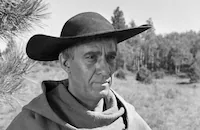Los que danzan
Cast & Crew
William Mcgann
Antonio Moreno
María Alba
Pablo Alvarez Rubio
Teresa Renner
Tito Davison
Film Details
Technical Specs

Synopsis
After a warehouse on the Hudson River in New York is robbed, the police arrest Chico Brady and charge him with killing a worker when he tried to sound the alarm. A watchman at the building, in league with the thieves, confirms the accusation in order to protect Juan, the gang's leader. When Chico is sentenced to death for a crime he did not commit, his sister Nora does all in her power to prove his innocence, seeking help from Juan and, later, from the police who assign the case to detective Daniel Hogan, brother of the man killed. Posing as a gangster known as Frank "Scarface" Tunner, Hogan infiltrates the gang and finds the proof that reveals the real culprit. Chico's scheduled execution is halted at the last moment, and Dan and Nora make plans to start a new life together.

Director
William Mcgann
Cast

Antonio Moreno
María Alba
Pablo Alvarez Rubio
Teresa Renner
Tito Davison
Alfredo Del Diestro

Martín Garralaga
José Soriano Viosca
Juan Duval
Crew

Film Details
Technical Specs

Quotes
Trivia
Notes
The 1930 film Those Who Dance, which was directed by William Beaudine and starred Monte Blue and Lila Lee, was also made in Spanish, German (Der Tanz geht weiter) and French versions. All the foreign versions were filmed simultaneously. No evidence has been located to indicate that the French version, entitled Contre-enquête, had U.S. screenings. That version was directed by Jean Daumery and starred Daniel Mendaille and Suzy Vernon. An earlier film based on the same story was produced, in 1924, by Thomas H. Ince.












